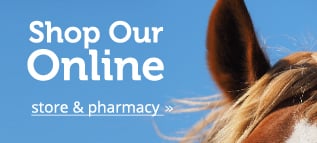SURGERY
Dr. Rhoads currently performs elective, non-emergency
surgeries in horses. Dr. Rhoads has extensive
experience in all types of orthopedic and soft tissue
surgeries. Most surgeries are performed under general
anesthesia, using inhalant anesthetic agents, extensive
patient monitoring, and assisted recovery in a special
padded room. In some instances, the surgery may be performed
in the standing, sedated animal using local anesthesia.
Common surgeries performed include:
Arthroscopy: Utilizing small incisions, a small
camera is inserted into the joint for assistance in
diagnosing intra-articular lesions, removing chips, aiding
in joint surface alignment during fracture repair, injection
of intra-articular bone cysts, debriding soft tissue
lesions, and debriding joint surfaces in cases of infection.
Advantages of arthroscopic surgery include the ability to
evaluate a large portion of the joint through a small
incision which causes less post-operative pain. The same
technology can also be used in tendon sheaths and selective
bursae.
Correction of angular limb deformity: Angular limb
deformities are common in foals and are defined as the
deviation of the limb from a straight line when viewed from
the front (front limbs) or rear (rear limbs). Typical
corrective surgeries include periosteal transection and
elevation, and/or transphyseal bridging using implants such
as surgical screws or screws and wires. These surgical
procedures are often used in conjunction with corrective
hoof care. The optimum outcome following surgery is time
dependent based on the growth potential of the foal and
various joints. Therefore early evaluation is advisable so
that a long term plan can be made for each individual.
Evaluations generally consist of both a visual exam and
radiographic exam of the affected joints.
Correction of flexural limb deformity: Flexural limb
deformities are common in foals to yearlings and are defined
as a deviation of the limb from a straight line when viewed
from the side. These are often referred as “contracted
tendons”. Flexural deformities may be congenital or acquired
later in life. Most of the congenital flexural deformities
can be corrected using drugs and
bandaging/splinting/casting. Acquired flexural limb
deformities often require surgical intervention in
combination with corrective shoeing. Typical surgical
procedures include inferior check ligament desmotomy,
superior check ligament desmotomy, or a combination of both.
Again the optimal post-operative outcome is time dependent,
so early evaluation and intervention is advisable.
Fasciotomy and fasciotomy/neurectomy for hind limb
proximal suspensory desmitis: Proximal suspensory
desmitis is a common cause of lameness in all types of
performance horses. The diagnosis is made by diagnostic
anesthesia and imaging including ultrasound, radiographs,
and occasionally magnetic resonance imaging. The unique
anatomy of the proximal suspensory ligament in the rear limb
makes it particularly challenging to treat medically, often
leading to treatment failure. The proximal suspensory
ligament is bordered by bone on 3 sides (cannon bone and
splint bones) and by an inelastic connective tissue
structure called a retinaculum on the 4th side. This creates
an inelastic “canal” for the proximal suspensory to glide
through. Also within this canal are blood vessels and nerves
that supply this structure. Injury to the proximal
suspensory leads to swelling and thickening which can create
a compartmental type syndrome because of the inelasticity of
these tissues. A similar situation in humans is carpal
tunnel syndrome. Surgery is performed to release this
retinaculum, thus relieving the pressure on the structure
and allowing it to heal appropriately. Depending on the
case, this procedure is sometimes combined with cutting the
nerve that supplies the proximal suspensory ligament. Often
times these procedures are combined with stem cell therapy
within the suspensory ligament.
Palmar digital neurectomy: This procedure is
performed in horses with forelimb foot pain where other
forms of medical treatment have failed. During this
procedure the nerves supplying the foot are severed.
Therefore, prior to the procedure, it must be determined
that the horse is a good and safe surgical candidate. The
following criteria must be determined prior to surgery: the
lameness is abolished by nerve blocks of the palmar digital
nerves, and there is no major damage/deterioration of the
navicular bone and deep digital flexor tendon. Typically
horses undergoing this procedure are at the end of their
performance career, in an attempt to salvage 1 or 2 more
years of soundness.
Ophthalmologic procedures: Many ophthalmologic
conditions can be treated with aggressive medical therapy,
however, a few will require surgical intervention. Typical
surgical procedures include conjunctival transposition or
flap, and placement of an amnionic graft. Both of these
procedures are performed on a severely ulcerated cornea,
where the integrity of the eye is in jeopardy.
Fracture repair: Due to advances in surgical
technique and implants available, many more fractured bones
can be repaired today compared to 10 years ago. Fractures of
the long bones are surgical emergencies and immediate
medical care and immobilization of the leg are required.
Fractures of non-weight bearing portions of the body such as
the skull are very amenable to surgical repair, and
generally carry a much more favorable prognosis than
comparable fractures in the leg.
Respiratory surgery: Many disorders of the upper
airway can be repaired surgically. Typical clinical signs of
respiratory disorders include exercise intolerance and
excessive respiratory noise during exercise. Most often, the
disorder can be diagnosed with upper airway endoscopy.
Surgeries performed include prosthetic laryngoplasty (tie
back) and ventriculectomy for laryngeal hemiplegia or
roaring, epiglottic entrapment correction, and subepiglottic
cyst removal.
Other surgical procedures: Mass removal, tenotomy,
splint bone removal, sequestrum removal, cryptorchidectomy (retained testicle removal), and cosmetic
procedures are also commonly performed.
Preparation For Surgery
Horses undergoing elective surgeries can be bathed or
cleaned the the day before or day of the surgery. Horses do
not need to be held off of food, but should not be fed any
grain the morning of surgery. Water can be offered free
choice. Generally, horses are dropped off the morning of
surgery, and can be picked up later that afternoon. In some
cases, the horse may need to remain hospitalized overnight
or longer for additional care.
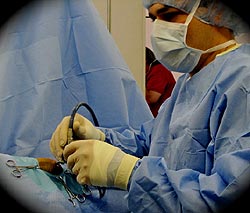
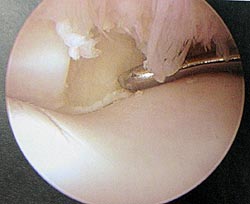
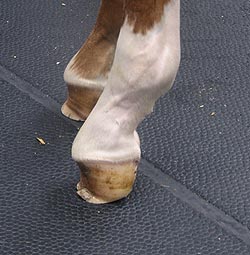
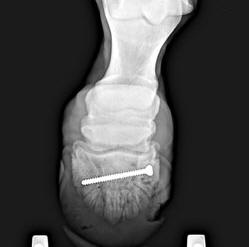
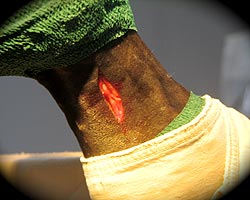
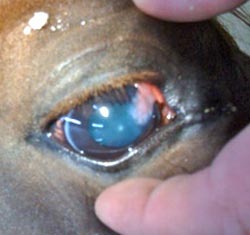
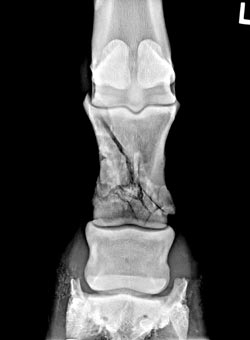
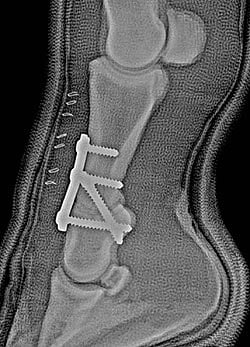
Premier Equine Veterinary Services
130 Hughes Road / P. O. Box 1066
Whitesboro, Texas 76273
Phone/Fax: 855-HORSVET
855-467-7838
[email protected]
Request Appointment












